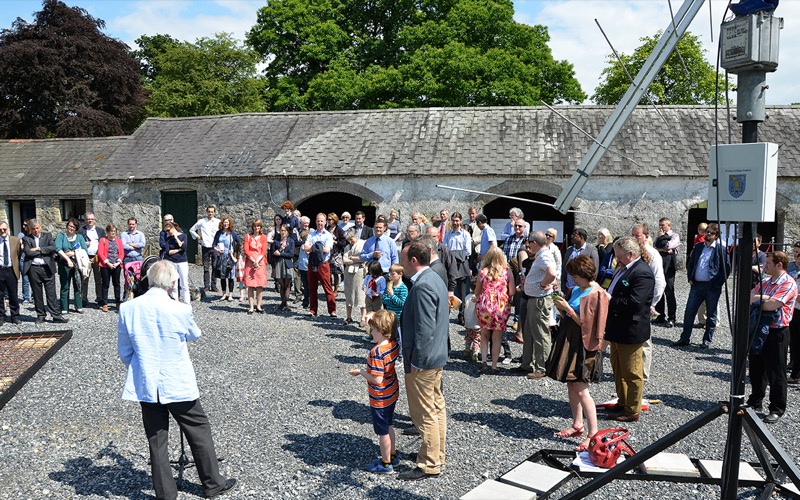Trinity’s New Observatory in Birr to Illuminate the Sun-Earth Connection
Posted on: 02 July 2014
The Rosse Solar-Terrestrial Observatory – a Trinity College Dublin School of Physics teaching and research facility devoted to studying the Sun and its effects on Earth – was officially opened with a ceremony at Birr Castle Demesne, Co. Offaly, on Saturday last.
The Sun is an enormous ball of hot gas, which keeps our planet hot enough for life to flourish. From time to time though, huge clouds of hot solar gas can be flung into space at hundreds of thousands of kilometres an hour. These ‘solar storms’ can endanger astronauts and cause problems for telecommunications and navigation systems here on Earth.
Scientists will use the observatory and its set of scientific instruments to work out when solar storms erupt from the Sun and when they hit the Earth’s upper atmosphere and magnetic field. Scientists at Trinity have developed the observatory at Birr Castle in the midlands of Ireland to monitor the effervescent Sun’s nearly unpredictable outbursts.
Director of the Rosse Solar-Terrestrial Observatory and Associate Professor in Physics at Trinity, Peter Gallagher, said: “We are delighted to reignite scientific research at Birr and to honour one of Ireland’s greatest innovators of the 1800s, the 3rd Earl of Rosse, by naming the observatory for him.”
Trinity has established links with Birr that stretch back over a century and a half. Indeed, the 3rd Earl was Chancellor in 1862–1867, the 4th Earl was Chancellor in 1885–1908 and the 6th Earl was Pro-Chancellor in 1949–1979.

The observatory will enable researchers to study the Sun and its effects on the Earth like no other facility in Ireland. A set of antennae will constantly monitor solar activity, while another antenna will monitor solar effects on a layer of the Earth’s upper atmosphere called the ‘ionosphere’. Ionospheric disturbances can cause drop-outs in high-frequency communications with aircraft.
An additional instrument, called a magnetometer, which is operated jointly with the Geophysics Section of the Dublin Institute for Advanced Studies, will continuously monitor disturbances in the Earth’s magnetic field. These ‘geomagnetic storms’ can cause deflections in compasses and surges in electricity power grids.
Professor Gallagher added: “A facility like this will also enable Irish students to gain valuable hands on skills in programming, electronics, antennas, and cutting-edge scientific research at a working observatory. Physics graduates are in great demand in high-tech companies and end up working in a wide range of sectors including IT, finance, engineering, education, which are all areas of particular importance to the development of the smart economy in Ireland.”
Further information on the Rosse Observatory can be found at www.rosseobservatory.ie.
Media Coverage:
Offaly Independent, Friday June 27th, 2014
Midland Tribune, Thursday July 3rd, 2014
